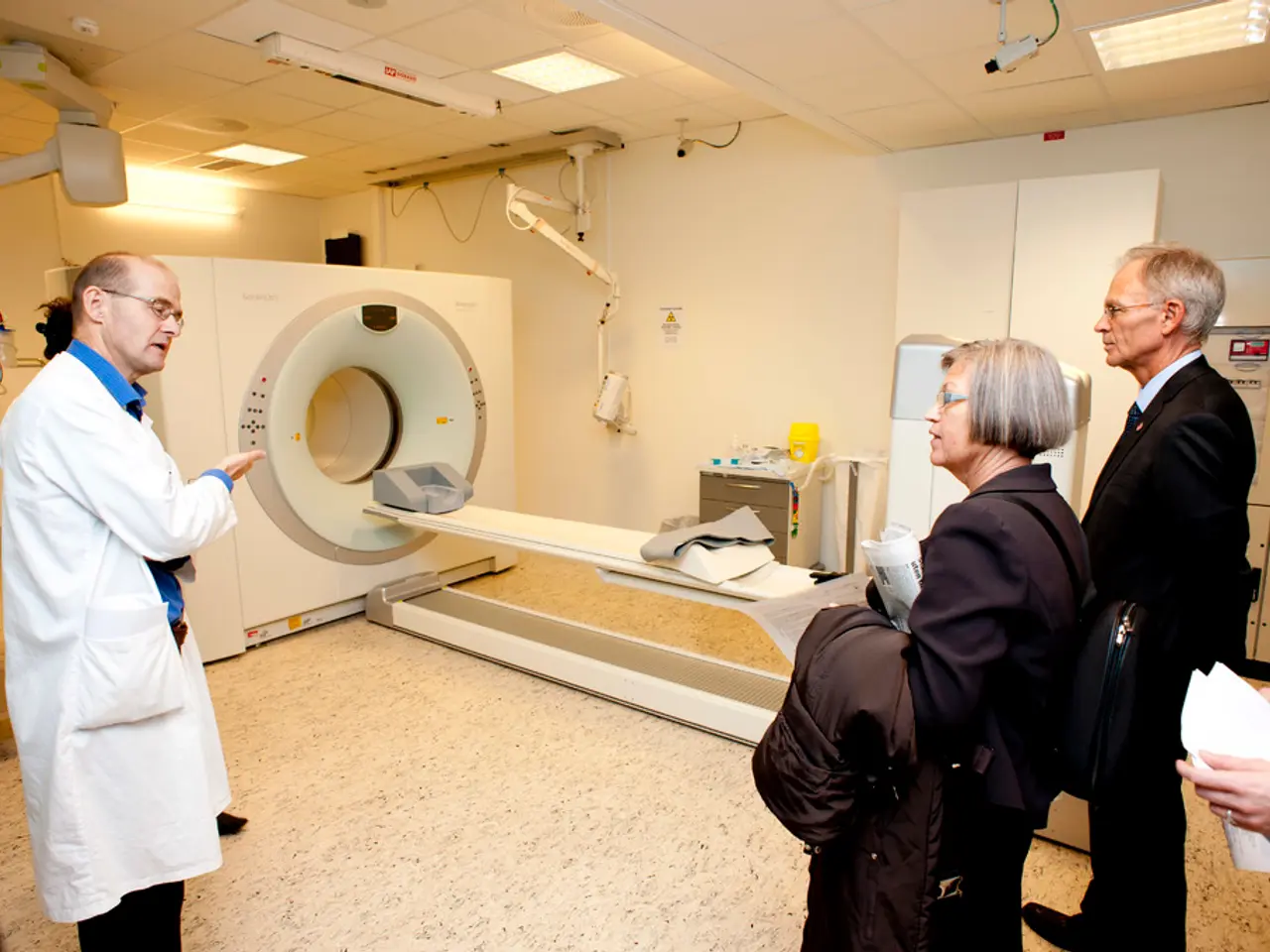AI's Potential Role in Reducing Healthcare Costs
In a significant leap forward for the healthcare sector, tech giants like Microsoft and Google are harnessing the power of Large Language Models (LLMs) to enhance affordability, reliability, and accessibility.
Microsoft's latest development, the MAI-DxO, is making waves in the medical field. This innovative system is deeply rooted in LLMs and is used for clinical reasoning, medical report generation, and augmenting clinical practitioners in their decision-making. Unlike traditional AI systems, MAI-DxO simulates how clinicians gather and evaluate information step-by-step, instead of relying on multiple-choice answers, and works by coordinating multiple LLMs, acting like a panel of virtual physicians that collaborate to reach a diagnosis.
Google's MedGemma 27B Multimodal, another open model for healthcare AI, scores an impressive 87.7% on the MedQA benchmark, rivaling larger models at a fraction of the cost. MedGemma and MedSigLIP, another open-source model, can handle both text and images, making them ideal for classification, image search, and zero-shot tasks.
Affordability in healthcare is improving unevenly, with positive trends not consistent across countries or populations. Global advances in health coverage have largely plateaued, with out-of-pocket expenses remaining high in many regions. However, AI adoption could reduce U.S. health spending by 5-10%, roughly $200-360 billion annually, by automating tasks such as clinical documentation, diagnostics, and administrative assistance.
LLMs are making strides in improving affordability and reliability primarily by enhancing access to clinical decision support, mental health services, and medical documentation automation. They provide scalable, instant, and consistent support for diagnosis, treatment guidance, and patient education, which can reduce costs related to unnecessary testing and specialist referrals and improve healthcare delivery especially in resource-limited settings.
Newer LLMs, such as DeepSeek-R1 and OpenAI-O3, incorporate advanced reasoning and step-by-step decision-making, improving accuracy for complex primary diagnoses and clinical coding tasks. Collaborative approaches where multiple LLM outputs are iteratively aggregated have shown to enhance medical decision support performance and reduce errors. However, ongoing challenges include managing social biases in model outputs and ensuring equity in care.
Recent breakthroughs in LLMs focus on enhancing their reasoning capabilities, their collaborativeness in medical decision-making, and multimodal processing, enabling more accurate and comprehensive clinical support systems. Models such as GPT-4 now support multimodal inputs (e.g., imaging plus text), expanding their utility in medical diagnostics and decision-making. Newer studies critically assess and aim to mitigate social biases within healthcare LLMs, which is essential for safe deployment.
Telemedicine has become a staple in modern healthcare, stabilizing at about 13-17% of all outpatient visits by mid-2021 and remaining popular among patients and providers. AI has become a foundational part of healthcare, assisting in medical imaging, automating diagnosis, and increasing efficiency. Analysts estimate that up to 20% of US healthcare spending could be delivered virtually if broadly adopted.
However, the benefits of AI adoption depend on appropriate infrastructure and costs. Health systems need to weigh customized AI solutions against tools, ranging from developing new models to using external services. Both MedGemma and MedSigLIP open-source models can be fine-tuned for specific use cases and run on a single GPU, with smaller variants like MedGemma 4B and MedSigLIP capable of running on mobile devices.
Despite the promising advancements, it's important to note that AI tools can help lower healthcare costs by increasing efficiency, but they require significant initial investments in the technology. In 2024, the per capita healthcare spending in the US is projected to be $12,703 compared to $37 in Pakistan. Achieving affordable healthcare worldwide will require digital adoption, smart financing, and continuous innovation, efforts that some high-income countries are advancing quickly, but that poorer countries are yet to instigate.
In conclusion, the integration of LLMs into the healthcare sector is revolutionizing the way we approach medical care, making it more accessible, reliable, and affordable. As research continues, we can expect to see more advancements in this field, paving the way for a future where AI complements human clinicians, especially in settings with physician shortages.
Artificial intelligence, specifically Large Language Models (LLMs), is playing a significant role in science, having a substantial impact on health-and-wellness and mental-health sectors through advancements in fitness-and-exercise and healthcare technology. Tech companies like Microsoft and Google are developing AI systems, such as the MAI-DxO and MedGemma 27B Multimodal, that aim to enhance affordable, reliable, and accessible medical care. These systems are designed to provide scalable, instant, and consistent support for diagnosis, treatment guidance, and patient education in a way that reduces costs and improves healthcare delivery, particularly in resource-limited settings. Furthermore, these advancements also focus on improving AI tools' reasoning capabilities, their collaborativeness in medical decision-making, and multimodal processing, making AI systems more accurate and comprehensive in clinical support systems.




